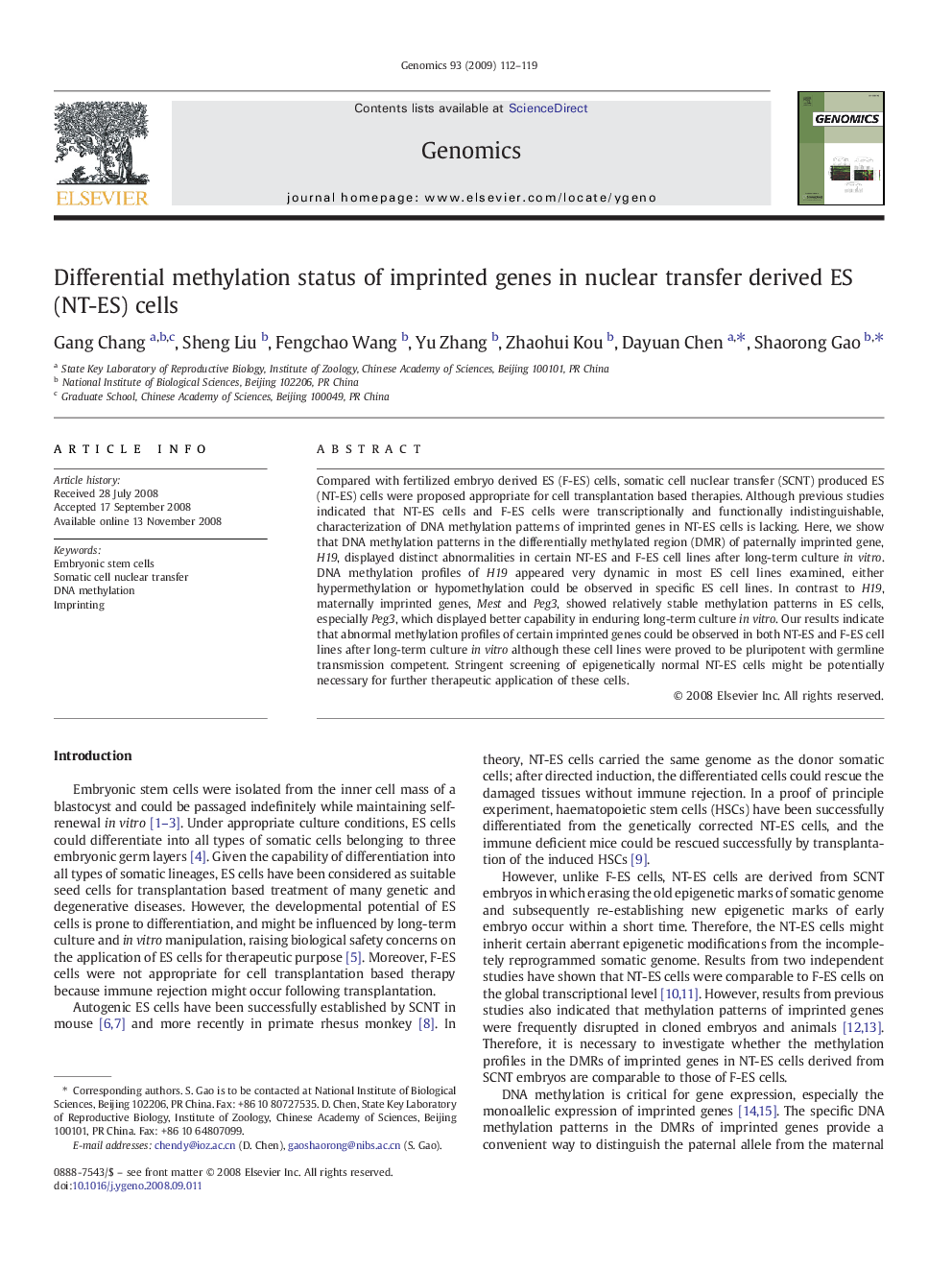| Article ID | Journal | Published Year | Pages | File Type |
|---|---|---|---|---|
| 2821279 | Genomics | 2009 | 8 Pages |
Compared with fertilized embryo derived ES (F-ES) cells, somatic cell nuclear transfer (SCNT) produced ES (NT-ES) cells were proposed appropriate for cell transplantation based therapies. Although previous studies indicated that NT-ES cells and F-ES cells were transcriptionally and functionally indistinguishable, characterization of DNA methylation patterns of imprinted genes in NT-ES cells is lacking. Here, we show that DNA methylation patterns in the differentially methylated region (DMR) of paternally imprinted gene, H19, displayed distinct abnormalities in certain NT-ES and F-ES cell lines after long-term culture in vitro. DNA methylation profiles of H19 appeared very dynamic in most ES cell lines examined, either hypermethylation or hypomethylation could be observed in specific ES cell lines. In contrast to H19, maternally imprinted genes, Mest and Peg3, showed relatively stable methylation patterns in ES cells, especially Peg3, which displayed better capability in enduring long-term culture in vitro. Our results indicate that abnormal methylation profiles of certain imprinted genes could be observed in both NT-ES and F-ES cell lines after long-term culture in vitro although these cell lines were proved to be pluripotent with germline transmission competent. Stringent screening of epigenetically normal NT-ES cells might be potentially necessary for further therapeutic application of these cells.
